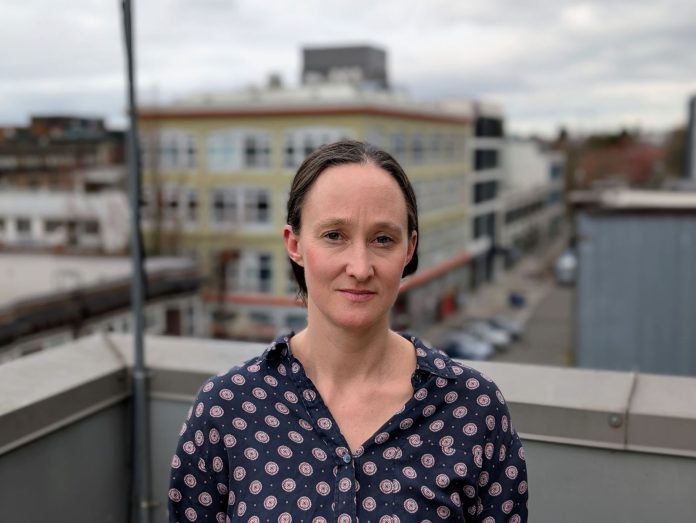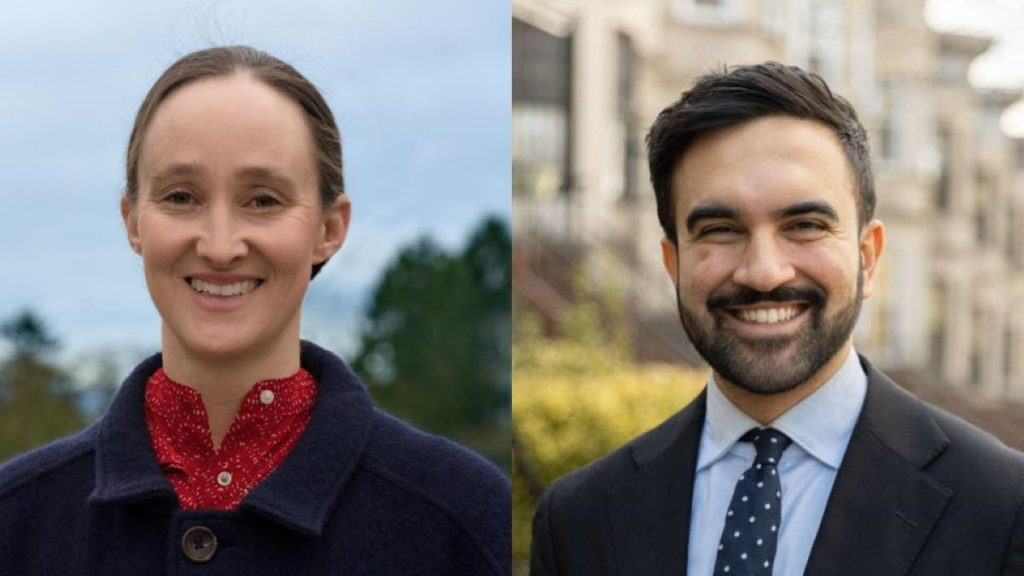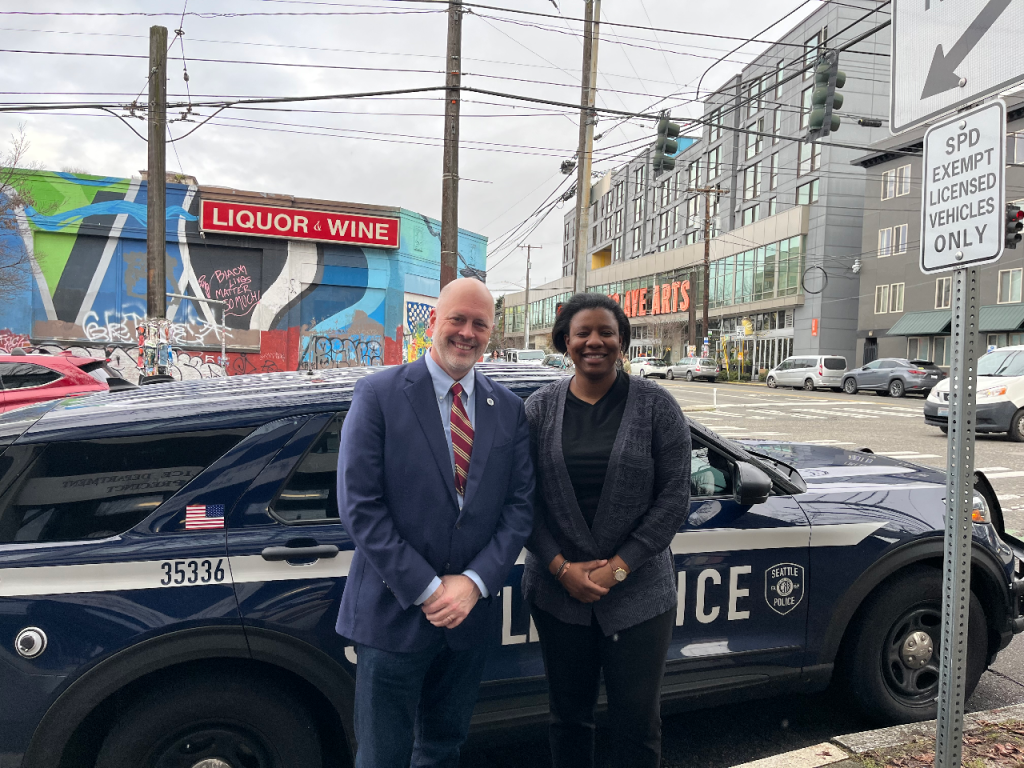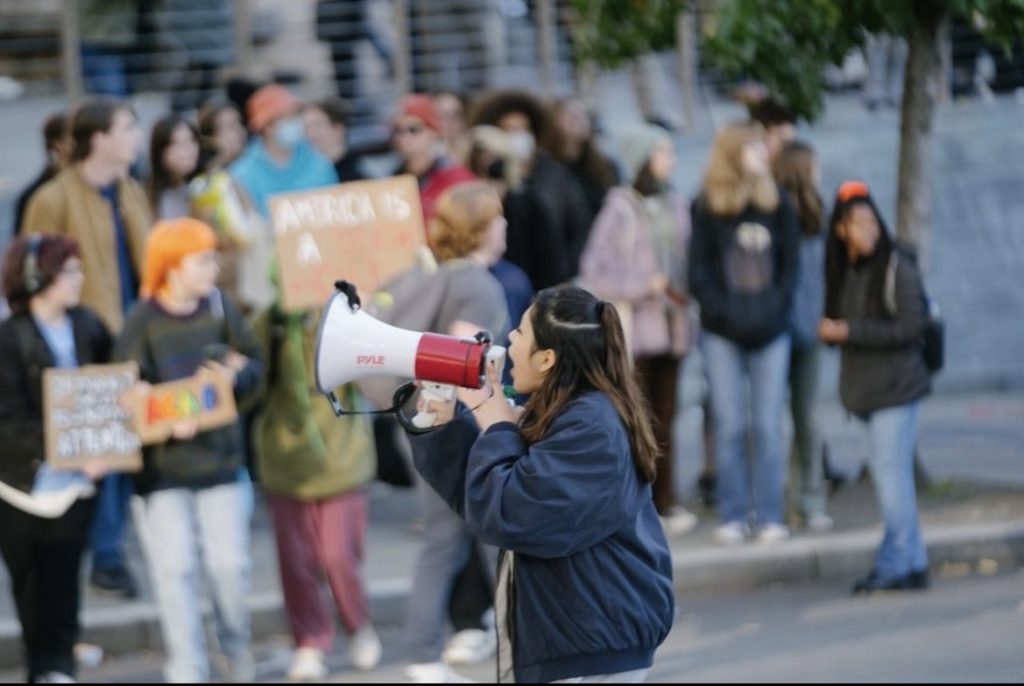
Now that its hard-fought mayoral race has concluded, Seattle is holding its breath to see how Mayor-elect Katie Wilson will govern.
In late 2021, more conservative-leaning tough-on-crime politicians — Mayor Bruce Harrell, Councilmember Sara Nelson, and City Attorney Ann Davison — came to power in Seattle, riding a wave of backlash to the progressive response to the 2020 George Floyd protests against police violence and frustration with the Covid-19 pandemic. All three politicians were defeated at the ballot box in November, signaling a leftward shift in Seattle voter sentiment, which was presaged by Councilmember Alexis Mercedes Rinck’s easy victory last year.
While Wilson ran on a platform of affordability and good governance, she didn’t shy away from talking about homelessness and public safety. Instead, she offered an alternative to the hardline punitive approach of Harrell, who emphasized his efforts in hiring more police officers even as he negotiated two contracts with the Seattle Police Officers Guild (SPOG) that drastically raised the price tag on how much each officer costs the City.
“Affordability, quality of life, and community safety are inextricably linked,” Wilson told The Urbanist in a written response. “When working families can actually afford to live here, that strengthens communities. And when neighborhood businesses are thriving and public spaces feel safe and welcoming to people of all incomes — that’s what makes a city livable.”
Insha Rahman, the vice president of advocacy and partnerships at the Vera Institute, compared Wilson’s run to that of Zohran Mamdani in New York City, as both candidates suggested police officers shouldn’t have to do everything.
“I think we saw a very similar binary choice in Seattle of Bruce Harrell doing more of the same — tough on crime but keep the status quo — versus Katie Wilson, who said we’ve got to be doing public safety differently,” Rahman told The Urbanist.

Vera Action ran a national poll in May 2025 that showed 60% of voters preferring what Rahman called a “serious about safety approach,” which Rahman said she saw Wilson do during her campaign.
“The most important measurement isn’t just about numbers of shelter beds, dollars spent, or crime statistics reported to the police,” Wilson said. “It’s about whether people have a safe place to go at night, whether we’re sending the most appropriate responders and how fast our response times are, and whether people of all incomes feel safe in their neighborhoods and believe that our city and our public spaces work for them.”
Focusing on this approach, Wilson walked back her defund stance of 2020, instead focusing on providing support to the police while recognizing that policing can’t solve many of the problems they’re being asked to address.
Wilson expressed strong support for the City’s new civilian-run Community Assisted Response & Engagement (CARE) department that provides alternative 911 response to crisis calls and civilianization of public safety tasks that don’t require a badge and gun. Wilson called for a more coordinated response to gun violence prevention, holding police accountable when they’ve engaged in misconduct, and scaling up diversion programs that already have a successful track record.
“What I’m going to be judged on, what my administration is going to be judged on, first and foremost, is homelessness and public safety,” Wilson said in an interview with Breaking Points. “And I really think that in the first couple years, we’re going to need to drill down and make progress on those really basic quality of life issues and show, I think we have an opportunity here for people on the progressive left to basically show that we can actually govern.”
The nexus between public safety and homelessness
During her campaign, Wilson drew a strong line between public safety and homelessness. She criticized Harrell’s approach of spending City resources sweeping homeless people from place to place instead of investing more in getting people housed, promising to open 4,000 new units of emergency housing by the end of her first term.
Instead of homeless encampment sweeps, Wilson favors a model more like the JustCare program, developed in Seattle during the pandemic, which focused on rapidly placing unhoused individuals into empty hotel rooms while providing them with intensive case management. Washington state used a similar model in their Rights-of-Way Safety Initiative, which cleared encampments in public rights-of-way by moving them into housing. This program ran for two years and was considered a success before most of its funding was cut this year in the state’s 2025-2027 budget.
CARE Chief Amy Barden thinks this focus on emergency housing could be a game changer, providing the missing link needed to more effectively stabilize the people suffering on Seattle’s streets. “You can provide case management and medical support, but if you can’t accommodate a safe housing provision, it’s hard to break the cycle,” Barden told The Urbanist.

Barden explained it’s extremely difficult for people to break harmful cycles of poverty, behavioral health issues, and addiction without a place to sleep and be safe.
A big question is how quickly Wilson will be able to stand up new emergency housing, particularly given the difficulties in siting facilities and tiny home villages, and where she’ll find the resources to do so in a tight budget.
“We know this is, mayors are sort of made or broken in their first three to six months on issues like public safety,” Rahman said. “It’s the kitchen table issues.”
The current Seattle City Council voted earlier in November to proviso, or reserve, $29.9 million for the cross-departmental Unified Care Team, which conducts homeless encampment sweeps, the lynchpin of Harrell’s model of homelessness response. That budget maneuver could make the transition to a different model more challenging, though mayors have thwarted provisos before.
The council also put a proviso on $11.1 million in the Human Services department that Harrell had earmarked for a new one-year shelter program. This money will potentially be used to backfill federal Continuum of Care funding the City might lose next year: in other words, to maintain the housing options and services the City already has rather than add new beds.

Wilson plans to be strategic, focusing on what will get results and being mindful of the scale of the homeless problem here in Seattle. She’ll be putting together more detailed plans of how to fund and implement her approach in her first months in office, plans which she expects to include redirecting existing funds.
“An effective homelessness response will be expensive, but what we’re doing now has a high price tag too, especially if you consider the indirect impacts in addition to the direct costs,” Wilson said. “And I believe that the people of Seattle are eager to see the city implement a compassionate, effective strategy to address homelessness, and would be happy to put the resources into an approach that they can see is working.”
CARE alternative response
During her campaign, Wilson focused on the potential of the CARE alternative response team and further civilianization of the police department to provide appropriate and faster responses while freeing up the police to address more serious issues that require a gun and badge.
In his last budget proposal, Harrell used part of a small sales tax increase to fund the expansion of the CARE team, doubling the number of responders from 24 to 48 and increasing coverage hours to 20 hours a day, seven days a week.
However, Harrell also negotiated a new contract with SPOG that, while allowing the CARE team to be dispatched by themselves for the first time, severely curtails which calls they’ll be able to answer solo.
Scheduled to receive a final council vote in December, the new contract stipulates that the CARE team cannot go by themselves to a call that is inside a private residence, business, or vehicle or at a homeless encampment. They’re also not allowed to respond solo to calls that are related to public drug use or drug possession or have any “drug paraphernalia” present, including the presence of tin foil, which can be constructed into a makeshift pipe.

In response, CARE is developing partnerships with the King County Jail and local hospitals in order to assist people being released. Callers to 911 will also be able to request CARE responders. Barden is hopeful SPD will also start referring more suitable calls directly to CARE.
Contracts for diversion services such as Let Everyone Advance with Dignity (LEAD), Co-LEAD, and We Deliver Care will be moved from the Human Services Department to the CARE department next year in the hopes of improving coordination. Barden would like to see homelessness response anchored in 911, with more dynamic possibilities for who responds based on specific situations instead of a static team of police officers and social workers.
Still, in order for the CARE team to operate as designed, Wilson will be forced to reckon with SPOG, convince the state legislature to intervene, or think creatively about how to provide this first response without getting mired in a legal battle over labor agreements.
“I’ll be working closely with the leadership of CARE and the SPD to maximize the effectiveness of the program within current constraints, and seek additional flexibility going forward,” Wilson said.
Meanwhile, SPD’s community service officers (CSOs) are close to finalizing their contract with the city that will designate their civilian body of work. In last year’s contract, SPOG agreed to a new list of tasks that could be given to civilians instead of officers, and many of these will now be handed to the City’s 24 CSOs.
While the CARE team and the fire department’s Health One and Health 99 respond to clinical matters, CSOs will respond to other issues, such as responding to lost, missing, and found property calls, delivering messages, and performing wellness checks that don’t have a clinical component.
“This is a great step forward,” Barden said. “I think you should have community helper functions in [SPD.]”
This formalization of the CSO role will give Wilson an opportunity to lean more heavily into civilianization of public safety functions.
“The key question is whether we’re deploying our resources effectively to keep people safe. That’s what matters,” Wilson said.
Violence prevention
Wilson doesn’t need the support of SPOG or SPD to invest in and scale up violence prevention efforts, including gun violence prevention programs.
The City Auditor’s Office offered up several critiques of Seattle’s current attempts at curbing gun violence earlier this year. Harrell didn’t let this stop him from announcing $14.7 million in gun violence prevention efforts as part of his fall campaigning spree. It is unclear how much the Auditor’s Office recommendations were taken to heart as part of his proposal.

Meanwhile, Public Health – Seattle & King County told The Urbanist earlier this fall that the city had indicated they would no longer be providing funding for the Regional Peacekeepers Collective starting in 2026. An initiative of the King County Regional Office of Gun Violence Prevention, the Regional Peacekeepers Collective uses a public health approach and provides support and services to young people and their families most at risk of gun violence.
Wilson expressed her disappointment in the Auditor’s findings that Seattle hasn’t been following best practices when it comes to preventing gun violence.
“Other cities have proven strategies that work,” Wilson said. “We need to implement those evidence-based approaches, coordinate better across jurisdictions, and make sure our violence prevention investments are actually producing results.”
In her platform, WIlson also discussed the role of diversion programs, apprenticeship and job training programs, and other programs that focus on building skills and community relationships, especially for youth and young adults.
Wilson’s selection of Quynh Pham, the Executive Director of Friends of Little Saigon, as one of four co-chairs of her transition team suggests her strong support of neighborhood models of public safety. Earlier this year, Friends of Little Saigon launched “Phố Đẹp (Beautiful Neighborhood),” an inclusive framework to public safety that prioritizes a housing first approach, providing services, and cleaning and activating public spaces.
Friends of Little Saigon based the initiative on a specific framework recommended by the Auditor’s Office that also influenced another successful neighborhood-based violence prevention project, Rainier Beach: a Beautiful Safe Place for Youth. Wilson also called out the work of the University District Partnership.
Federal tests might come early
Rahman suggested Wilson could also gain credibility with Seattle residents around public safety based on her response to potential federal overreach, ranging from Trump deploying the National Guard to Seattle to further ramping up of illegal U.S. Immigration and Customs Enforcement (ICE) activity.
“Our city and state have strong laws on the books to protect immigrant communities, but the Trump Administration’s record shows that these laws aren’t enough to ensure Seattle would actually function as a sanctuary city if federal troops are deployed,” Wilson said. “I opposed this year’s expansion of the CCTV program in large part for this very reason — as immigrant rights and civil rights leaders repeatedly pointed out, expanding and centralizing surveillance would make it all too easy for the federal government to target people here.”
At a candidate forum sponsored by the advocacy group Whose Streets, Our Streets! in October, Wilson’s answers to several rapid yes or no questions showed her skepticism of surveillance, especially during President Donald Trump’s second term, which has been marked by a vast expansion of the country’s surveillance apparatus.
At the forum, Wilson said she would pause new surveillance camera installations until an independent review proved they reduce crime without harming immigrants and communities of color, would require consent before authorizing surveillance in immigrant-heavy communities in Seattle, and committed to not deploying new surveillance technologies.
While standing up to Trump, Wilson will need to help Seattle residents understand what she’s doing to address public safety and homelessness during her first several months, and indeed, her entire term. She’ll be drawing on her experience as a coalition builder and community organizer both to solve problems and communicate clearly about them.
“To me, good governance means creating real opportunities for community input, being transparent about tradeoffs and challenges, and building coalitions to support transformative policies,” Wilson said. “It means treating people as partners in solving our city’s challenges, not just people who pay taxes and receive services. It also means honest communication — not just when things are going well, but when we hit obstacles.”
The Wilson campaign also set among its goals restoring faith in government in general.
“The city faces big challenges, but I believe strongly in the capacity of government to be effective, responsive, and get things done.”
Amy Sundberg is the publisher of Notes from the Emerald City, a weekly newsletter on Seattle politics and policy with a particular focus on public safety, police accountability, and the criminal legal system. She also writes science fiction, fantasy, and horror novels. She is particularly fond of Seattle’s parks, where she can often be found walking her little dog.


